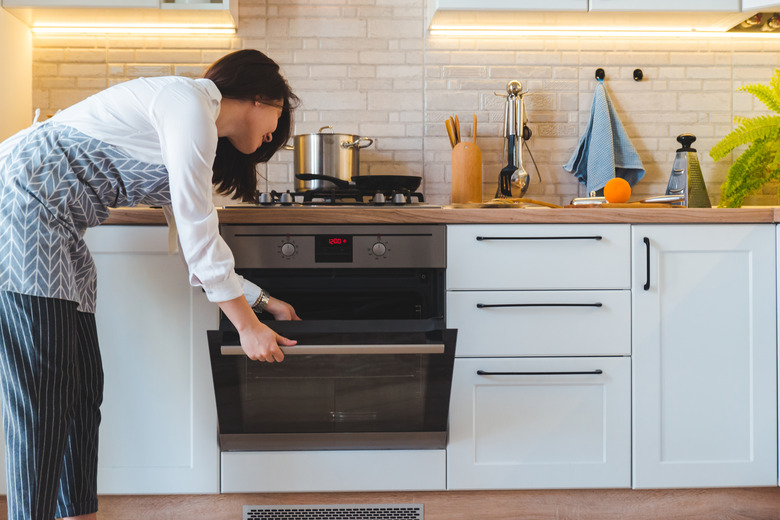Types Of Baking Pans For Convection Oven Cooking
A convection oven uses fans to circulate hot air around the food, which accelerates the cooking process. Because even airflow is critical for evenly heating the food, the best cookware for a convection microwave or oven will have a shallow rim or no rim at all. A higher rim could prevent the air from reaching the food, resulting in a top that's well-cooked but an interior that's still raw.
Because of these restrictions, convection ovens aren't the ideal choice for all baked goods. It's believed that convection cooking can prevent the ideal rise in cakes, cookies, biscuits and muffins, producing denser versions instead of the usual light-and-fluffy favorites, as suggested by MyRecipes. However, there are some tips and tricks you can follow for better results.
What Materials to Look For
What Materials to Look For
You can use bakeware made of aluminum, glass, ceramic or stone in a convection oven. The thicker the material, the less effective convection cooking may be. In these scenarios, choose to use the bottom heating element if possible in order to heat your pan and assist in more even cooking.
If you commonly line or cover your bakeware with aluminum foil or parchment paper, be aware that this might blow loose due to the fans inside a convection oven. It is safe to use a heavier silicone liner instead.
Muffin Pan for a Convection Oven
Muffin Pan for a Convection Oven
If you think about a traditional muffin pan and then imagine air flowing over, under and around it, it's not hard to see why muffins are especially tricky to bake in a convection oven. The middle row simply doesn't receive the same contact with air as the outside edges, which will lead to uneven cooking.
Instead of using a muffin pan in a convection oven, place stand-alone muffin tins on a rimless baking pan. Make sure there's about two to three inches of space around each tin. Fill the tins with batter like usual and place them into the convection oven. This method exposes the muffins to greater air circulation and will yield better results than using a muffin pan in a convection oven.
Flip or Rotate Your Bakeware
Flip or Rotate Your Bakeware
You don't necessarily need a special convection oven bakeware set if you follow a few tips and tricks to adapt your current pans. For example, if you have a baking pan with a shallow rim, try flipping the pan upside down and placing your baked goods on the bottom side.
Another tip to try — regardless of the type of bakeware you're using in your convection oven — is to rotate the pan 180 degrees halfway through the cooking period. This could help ensure that the air flows evenly around the pan instead of cooking one side faster than another.
Create a Raised Surface
Create a Raised Surface
In a pinch, you can encourage greater airflow around your baked goods by fashioning a platform for the baked goods to sit on. Glass bakeware is safe to use in a convection oven, but because it often has a rim, consider flipping it upside down to provide a flat surface for your baked goods to rest on.
Although not a perfect solution because air circulation underneath the pan will still be affected, this can be a useful trick when you don't have a flat pan to work with. Most of the food's surface area will still get plenty of air flow with this method.
